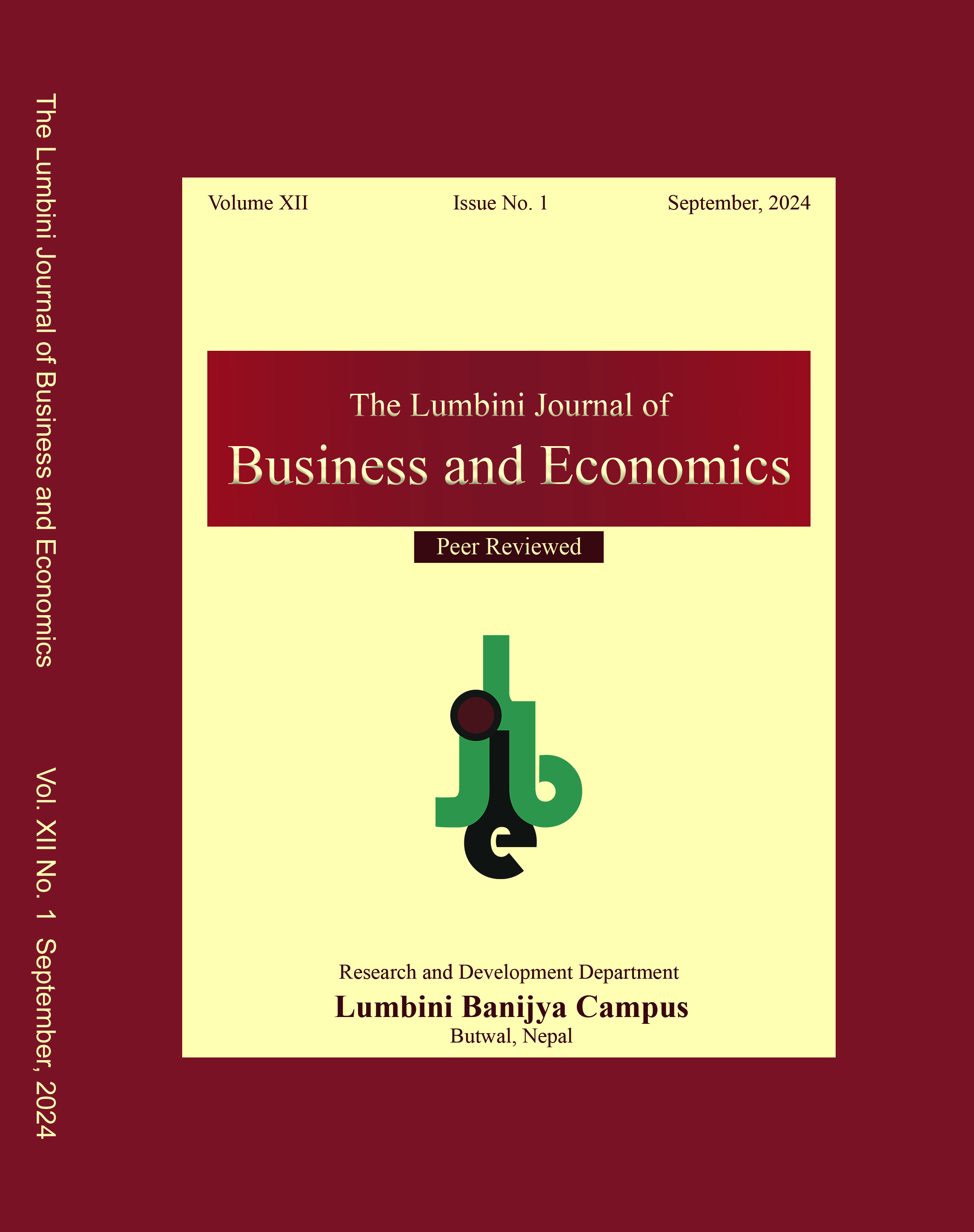Government Expenditure and Economic Growth of Nepal
DOI:
https://doi.org/10.3126/ljbe.v12i1.70328Keywords:
ARDL, bound test, economic growth, government expenditureAbstract
Purpose: This study aims to analyze the relationship between various categories of government expenditure and economic growth in Nepal. The purpose is to understand how these defense, health, agriculture and education expenditures influence economic performance and offer insights for more effective resource allocation.
Methods: This research used a combination of descriptive and causal research designs, using secondary data sourced from published reports. Data from 1976 to 2022 AD were selected for its comprehensive data availability and analyzed.
Results: The findings reveal that defense expenditure has a negative and significant association with economic growth, suggesting that high levels of defense spending are detrimental to economic development. Conversely, health and education expenditures show positive and significant relationships with economic growth, highlighting the importance of investing in human capital for fostering sustainable development. Agriculture expenditure, although positively related to economic growth, is statistically insignificant, indicating the need for policy refinements to enhance its impact.
Conclusion: The study underscores the necessity for strategic reallocation of government resources. Reducing defense expenditures and increasing investments in health, education and agriculture are essential for promoting robust and sustainable economic growth.




